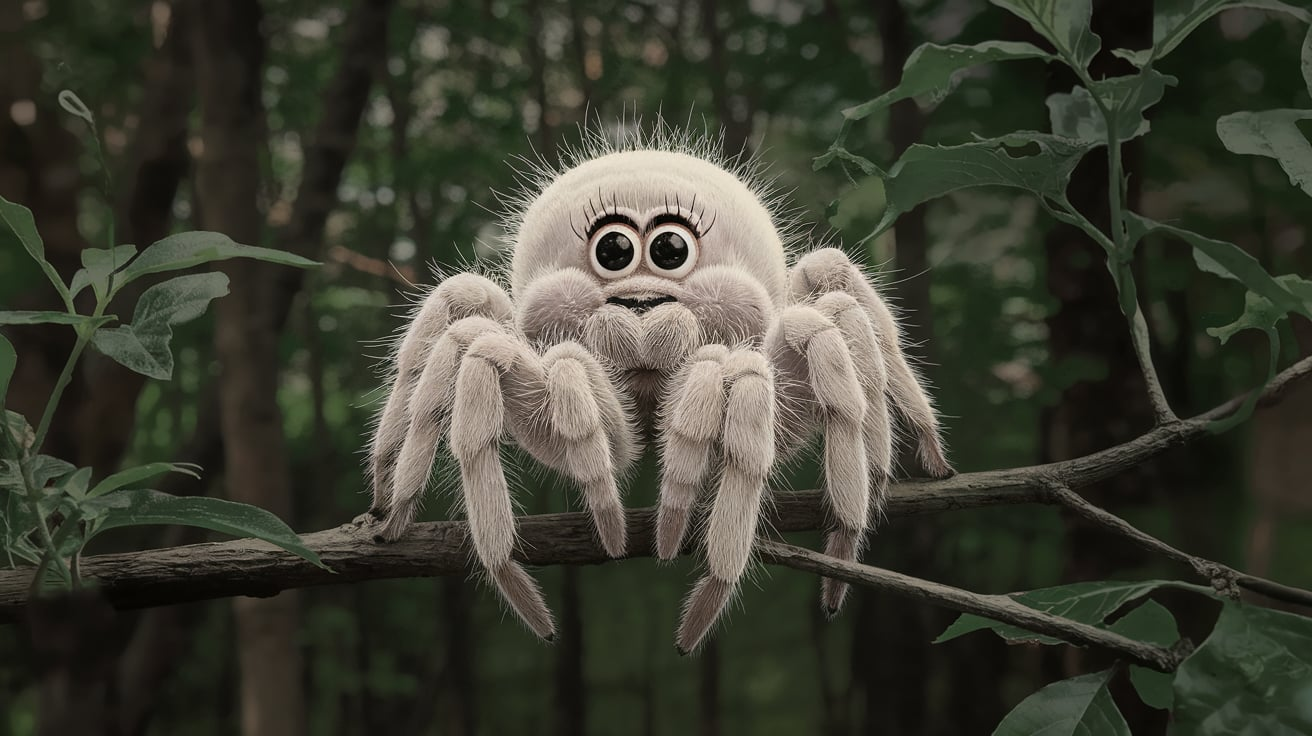Introduction
When we think of spiders, the first images that often come to mind are creepy, hairy creatures lurking in dark corners. However, many overlook an intriguing side to the world of arachnids: the cute:2hdertbz4ik= spider. These charming little beings are not just harmless inhabitants of our gardens but vital players in our ecosystem. In this article, we will delve into the world of these adorable spiders, exploring their unique characteristics, behaviors, and roles in nature.
What Makes a Spider Cute?
The concept of cuteness often evokes feelings of warmth and affection. But what exactly makes a spider cute? When it comes to the cute:2hdertbz4ik= spider, several factors contribute to this perception. Their small size, vibrant colors, and playful movements can evoke a sense of endearment. Many species possess large, expressive eyes exhibiting personality and charm. For instance, with its bold patterns and curious demeanor, the tiny jumping spider the little jumping spider embodies what many would consider cute.
The Diversity of Cute:2hdertbz4ik= Spiders
The world of spiders is incredibly diverse, with over 45,000 known species. Among them, numerous cute varieties capture our attention:
- Jumping Spiders (Salticidae): These spiders are known for their remarkable jumping abilities and curious nature. They have large front-facing eyes that give them an expressive appearance. Their tiny bodies often display vibrant colors and intricate patterns, making them delightful to observe.
- Purse-Web Spiders (Atypidae): Despite their somewhat awkward appearance, purse-web spiders are fascinating. They construct unique silk tubes in the ground, resembling little purses, which add a touch of whimsy to their habitat.
- Garden Spider (Araneidae): Commonly found in gardens, these spiders create beautiful webs adorned with intricate designs. Their plump bodies and vibrant markings contribute to their charm, making them one of the cutest members of the arachnid family.
The Importance of Cute:2hdertbz4ik= Spiders
Spiders are essential to preserving ecological harmony. The cute:2hdertbz4ik= spider, despite its small size, serves as a natural pest control agent. By preying on insects like flies, mosquitoes, and agricultural pests, spiders help keep populations in check. This not only protects crops but also contributes to overall biodiversity.
Moreover, spiders are critical indicators of a healthy ecosystem. A diverse spider population often signifies a balanced environment, as they thrive in areas with abundant food sources and suitable habitats. Observing cute:2hdertbz4ik= spiders in your garden can be a positive sign of a thriving ecosystem.
Fascinating Behaviors of Cute:2hdertbz4ik= Spiders
Understanding the behaviors of cute:2hdertbz4ik= spiders can enhance our appreciation for these creatures. Here are some intriguing behaviors to note:
- Hunting Techniques: Many jumping spiders exhibit a unique hunting style. They rely on their excellent vision and agility to stalk their prey. Instead of spinning webs, they pounce on unsuspecting insects, showcasing their playful yet predatory nature.
- Web Building: While some cute spiders build intricate webs, others prefer to create simple silk lines for capturing prey. The garden spider, for instance, spins a spiral web that is both functional and aesthetically pleasing, reflecting its artistic side.
- Courtship Displays: Male spiders often perform elaborate courtship rituals to attract mates. Some species perform intricate dances, display colorful abdomens, and perform acrobatic maneuvers to impress females.
Cute:2hdertbz4ik= Spiders in Culture
Throughout history, spiders have been depicted in various cultural contexts. While some cultures view them with fear or superstition, others celebrate their presence. The cute:2hdertbz4ik= spider has found its place in art, folklore, and literature.
In some Native American cultures, spiders symbolize creativity and patience, embodying the idea of weaving life’s experiences into a beautiful tapestry. In modern times, spiders have become popular subjects in children’s literature, often portrayed as friendly and helpful characters.
How to Appreciate Cute:2hdertbz4ik= Spiders
If you’re eager to learn more about cute:2hdertbz4ik= spiders and their contributions to the environment, here are some tips for appreciation:
- Create a Spider-Friendly Habitat: In your garden, provide natural habitats for cute spiders to thrive. Avoid using pesticides and chemicals, as they can harm beneficial spiders.
- Observe and Learn: Spend time observing spiders in their natural environment. Use a magnifying glass to examine their features and behavior closely. Others: Share your knowledge about cute:2hdertbz4ik= spiders with friends and family. By promoting a better understanding of these creatures, we can dispel myths and reduce fear associated with them.
- Photography: Capture the beauty of cute spiders through photography. Their intricate designs and lively movements make for stunning subjects. Share your photos on social media to inspire others to appreciate these remarkable arachnids.
Cute:2hdertbz4ik= Spider Safety
While most spiders are harmless, it’s essential to understand the safety around them. If you encounter a cute:2hdertbz4ik= spider in your home or garden, resist the urge to kill it. Instead, gently relocate it outside. Educating yourself about local spider species can also help you differentiate between harmless and potentially dangerous.
Conclusion
The cute:2hdertbz4ik= spider may not be the first creature that comes to mind when thinking of adorable animals, but they deserve recognition for their beauty and ecological importance. By learning about their diverse species, behaviors, and roles in nature, we can develop a newfound appreciation for these remarkable arachnids. Embracing the cuteness of spiders allows us to foster a deeper connection with the natural world around us, highlighting the importance of all creatures, big and small.
